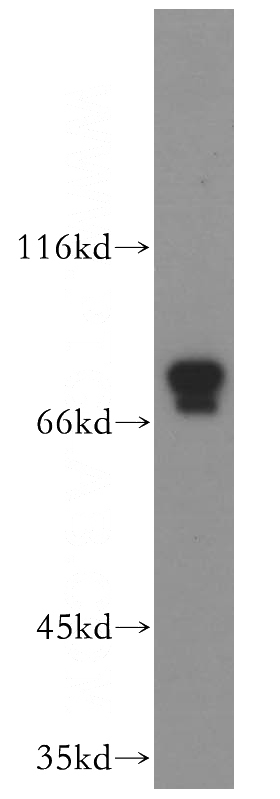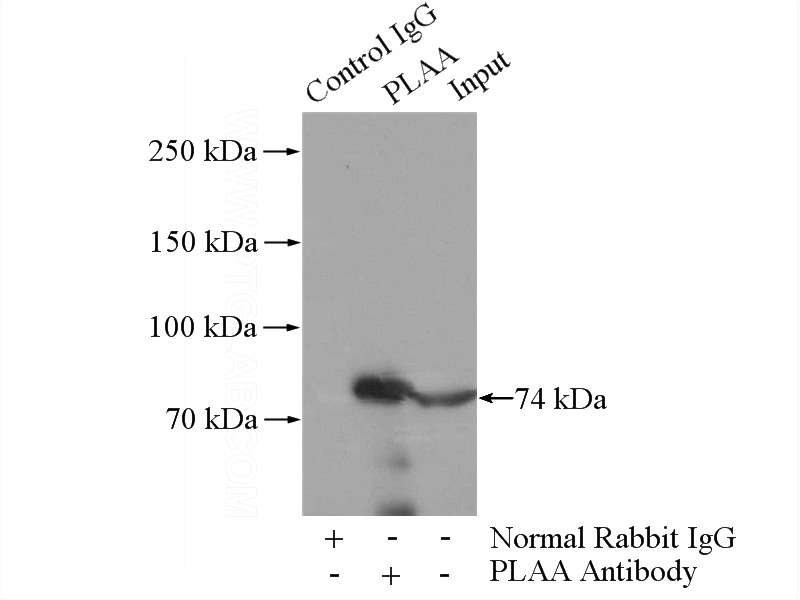-
Product Name
PLAA antibody
- Documents
-
Description
PLAA Rabbit Polyclonal antibody. Positive IP detected in K-562 cells. Positive WB detected in K-562 cells, MCF7 cells. Observed molecular weight by Western-blot: 72-74 kDa
-
Tested applications
ELISA, WB, IP
-
Species reactivity
Human; other species not tested.
-
Alternative names
DOA1 antibody; FLJ11281 antibody; FLJ12699 antibody; PLA2P antibody; PLAA antibody; PLAP antibody
-
Isotype
Rabbit IgG
-
Preparation
This antibody was obtained by immunization of PLAA recombinant protein (Accession Number: NM_001031689). Purification method: Antigen affinity purified.
-
Clonality
Polyclonal
-
Formulation
PBS with 0.02% sodium azide and 50% glycerol pH 7.3.
-
Storage instructions
Store at -20℃. DO NOT ALIQUOT
-
Applications
Recommended Dilution:
WB: 1:200-1:2000
IP: 1:200-1:2000
-
Validations

K-562 cells were subjected to SDS PAGE followed by western blot with Catalog No:113929(PLAA antibody) at dilution of 1:500

IP Result of anti-PLAA (IP:Catalog No:113929, 4ug; Detection:Catalog No:113929 1:600) with K-562 cells lysate 3200ug.
-
Background
Phospholipase A-2-activating protein (PLAA), also named PLAP, can interact with ubiquitin and is involved in the maintenance of ubiquitin levels. PLAA contains multiple consensus domains including WD repeats, PFU domain and PUL domain. Although the function of PLAA remains unclear, ubiquitin binding of PLAA might be the central role that connects ubiquitination and degradation in ERAD. Recent finding revealed that PLAA served as a novel nociveptive mediator after incision, and its expression level is regulated by miR-203.
-
References
- Sun Y, Li XQ, Sahbaie P. miR-203 regulates nociceptive sensitization after incision by controlling phospholipase A2 activating protein expression. Anesthesiology. 117(3):626-38. 2012.
Related Products / Services
Please note: All products are "FOR RESEARCH USE ONLY AND ARE NOT INTENDED FOR DIAGNOSTIC OR THERAPEUTIC USE"
